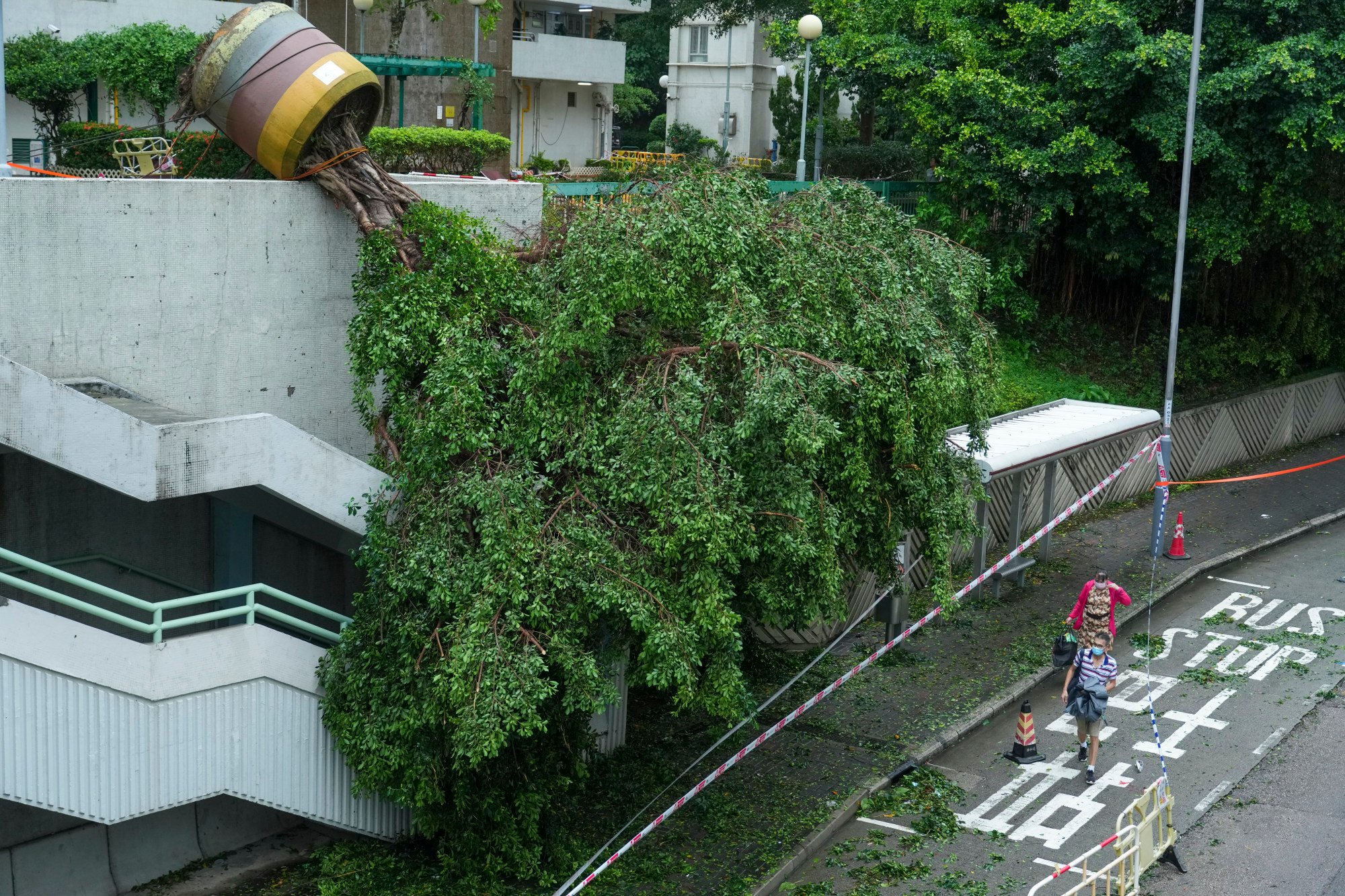
Hong Kong must ‘revolutionise’ tree-planting methods to ensure public safety, reduce property damage, experts say as second possible storm looms
- Experts say government must opt for better quality soil and use more when planting trees in high-density areas to prevent them becoming vulnerable to storms
- ‘We were very lucky that Super Typhoon Saola was not that serious, or we could have lost a lot more trees,’ one scholar adds
Hong Kong must “revolutionise” how trees are planted to prevent thousands being felled, as well as reducing property damage risks and ensuring public safety, as a second storm could potentially hit just days after Super Typhoon Saola, experts have said.
“We have to revolutionise the way we plant trees in this high-density environment,” Professor Jim Chi-yung, of the Education University of Hong Kong’s geography and environmental science wing, said on Sunday.
“We were very lucky that Super Typhoon Saola was not that serious, or we could have lost a lot more trees.”
The Hong Kong Observatory on the same day said it could issue a No 1 warning signal on Monday in response to Typhoon Haikui, only days after Saola felled 1,545 trees across the city.
The academic said the damage to local trees had been minimal as the typhoon was less fierce than expected and Mangkhut in 2018 had wiped out about 100,000 of the city’s “weak trees”.
Saola, which is named after a rare and protected horned mammal in Vietnam, was the first No 10 typhoon since Mangkhut struck Hong Kong five years ago and became one of the most intense storms on record.
But Jim warned that trees in Hong Kong were planted using low-quality soil that caused them to become weak and easier to uproot during typhoons.

“If you put rubbish in, you are going to get rubbish out,” he said and described the practice as a centuries-old tradition of using bad soil in Hong Kong.
“The trees planted in the aftermath of Mangkhut are not that big, yet. However, in future, they will be more susceptible to typhoons and strong winds.”
Ken So Kwok-yin, chief executive of the Conservancy Association, agreed that authorities needed to shake up their afforestation methods.
“It’s not just the quality of the soil, but also the volume,” he said. “Hong Kong is very dense, so it is hard for trees to have enough room to develop strong roots, which means they are easily uprooted.”

He also called for officials to carry out checks to reduce the risk of damage to people and property to prepare for Haikui, which the Observatory has said may come within 800km (497 miles) of the city this week.
Haikui is the Chinese name for sea anemones, a flowerlike type of marine animal.
“Normally, risk assessment and mitigation should be completed every year before May, in preparation for the typhoon season in September,” So said.
“However, some trees will have become damaged with broken branches or pulled from their roots but not totally felled. A quick inspection should be carried out and measures taken so that they do not harm people or cause any damage in future.”
The association chief said checks should be prioritised in high-traffic locations or those with large volumes of people.
Ricci Wong Cheuk-kin, the founder and CEO of Hong Kong Timberbank, an organisation that recycles felled trees, said the remains usually ended up in waste recycling centre Y Park or at landfill sites.
“This is a real tragedy. We try to recycle as many as possible but it can be difficult because you cannot just take a felled tree,” he said.
Trees either fell under the purview of government departments or were owned by private individuals, depending on their locations, Wong explained.
Over in Causeway Bay’s Victoria Park, 145 government employees conducted a clear-up operation on Sunday morning to dispose of some partly felled and 23 completely uprooted trees, a spokesman said.
A Post reporter observed some damage to the park facilities, including a bench that had its metal frame and wooden backrest bent by a fallen tree.
A member of the clearance team surnamed Lau said the damage done by Saola was “not too serious”.
“I was here five years ago [when Super Typhoon Mangkhut hit] and the damage was extreme,” Lau said.


